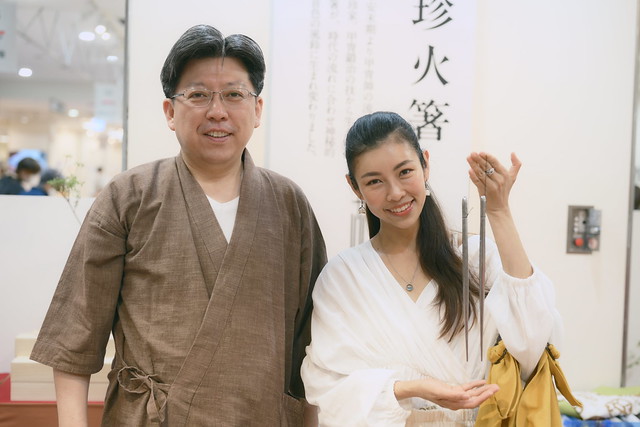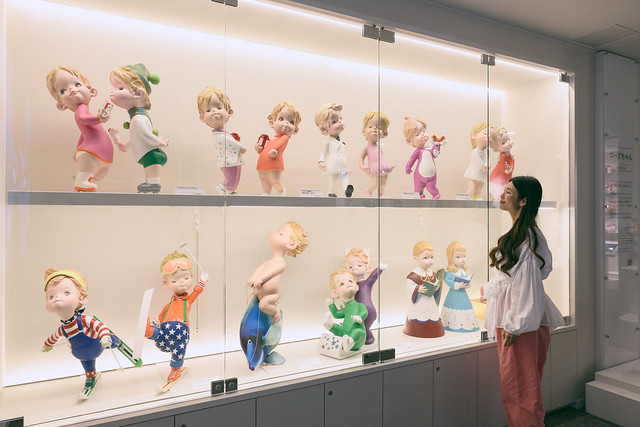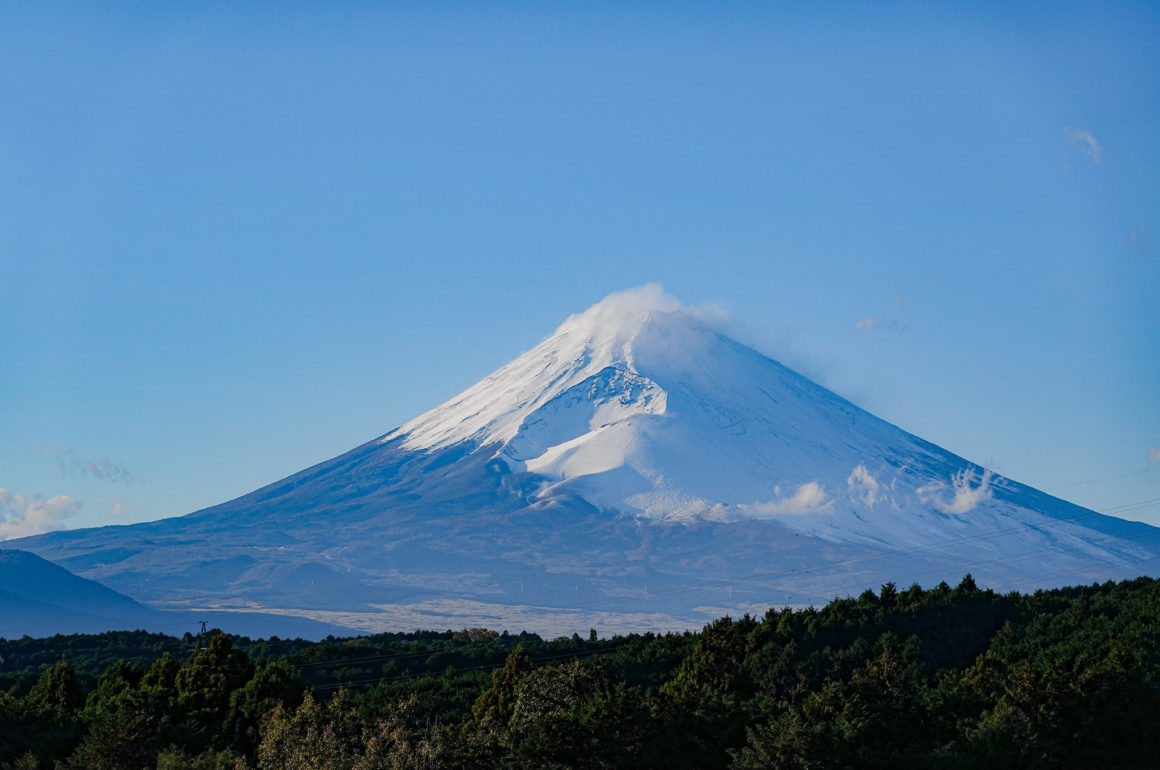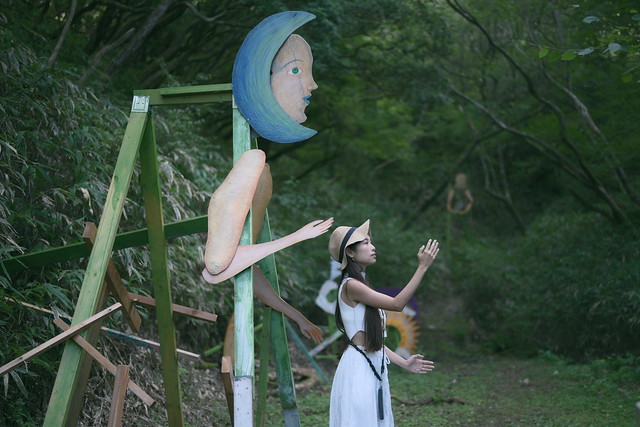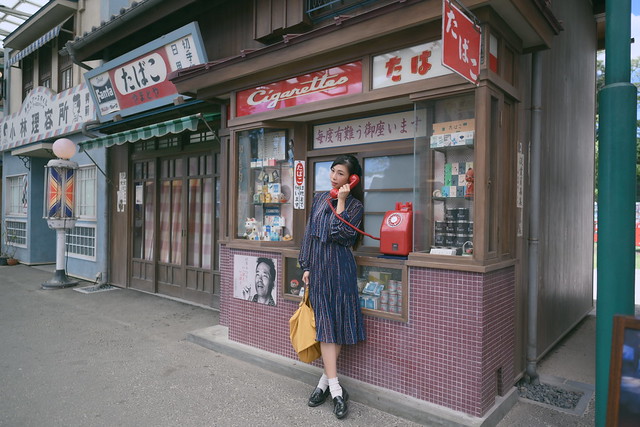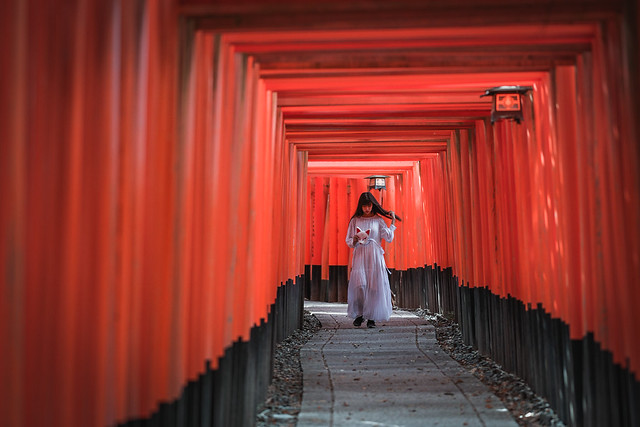
Last week, I have decided to make one last trip back to Kyoto before the international crowd returns. While I usually favor visiting low-key remote locales that are still under the radar of mainstream tourism, the pandemic has given me a fortunate once-in-a-lifetime chance to see one of the most popular prefectures in Japan in a new light.

The theme for my trip was to bask in all the energy of Kyoto’s “power spots” – a term used in Japan to refer to a particular area where one can feel in tuned with nature and take in all its spiritual energy, whether for healing, for blessing and good fortune, or simply to refresh your body and mind. I considered it a mini pilgrimage in line with my recent walk on the spiritual path.
While it is near impossible to come up with a “finest selection” given Kyoto’s impressive concentration of countless distinguished temples and shrines, I have compiled a total of 8 attractions which I logically think and intuitively feel are some of the most powerful spiritual sites in Kyoto. To be completely honest: I am never someone with very strong spiritual sensitivity like… stare at blank space WHOA *chakra activated*… But I had a pressing urge to share this with those of you who chose to read this. Hopefully the next time you come back, the list would be helpful for you to rejuvenate and bring home something precious with you.
Here goes.
1.Yasaka Shrine 八坂神社

Arguably one of the most important landmarks smack-dab in Kyoto City, you will have to be super oblivious to miss it, given its ultra convenient location. You are bound to come across Yasaka Shrine while you walk between Gion district and Higashiyama district, two of the most major attractions in the city. Yasaka Shrine also holds one of the 3 most famous festivals in the whole of Japan – Gion Matsuri.
What is little known is that, a visit to Yasaka Shrine at night gives a completely different vibe, not just aesthetically with all the lanterns lit up creating a mysterious atmosphere, but it makes it very conducive for one to receive spiritual signs from the divine being undisturbed by flock of tourists. It gave me goosebumps, in a good way.
It is said that the “Seiryu” -Azure Dragon, one of the four guardian spirits that protects the east region of Kyoto dwells here. The main deity enshrined is Susano-no-mikoto, and visitors often come to pray for health and safety.
There are also many sub shrines in the complex that enshrines an assortment of deities including Amaterasu of Ise Jingu, the gods of entertainment (Sarutahiko Kami & Amanouzeme-no-Mikoto), business prosperity (Kotoshironushi-no-Mikoto), love relationship (Ookuninushi-no-mikoto). There are even deities offering blessing for beauty, blacksmithing and dance (the last one being popular among Geisha in Kyoto).
So if you don’t have the luxury of time to visit all 8 spiritual sites, this is sort of like a TLDR power spot for you to reap the benefit of being blessed in all areas of life.
2.Yasaka Koshindo Temple 八坂庚申堂

You might have seen Yasaka Koshindo all over Instagram, for its colorful cloth balls called “kukurizaru” which are supposed to be… monkeys. These balls are the equivalent of an “ema” at shrines, where wishes are written and tied onto the rainbowly hanging pillars.
Often, you can spot young ladies dressed in their elaborated vintage kimono roaming in the temple, an addition to making the temple even more vibrant. But it would be a pity to just swing by for a photogenic shot to impress your ex classmates on social media, for this little temple has a lot more than meets the… camera lens.
Venerated at this temple is Shomei Kongo (青面金剛), a deity of Taoism origin. Although Koshin is a minor folk faith that has lost popularity over time due to its beliefs being dismissed as superstitions (for example, are you willing to stay up all night every 60 days to prevent the three corpses (?) who inhabit human bodies to leave your physique and report your sins to gods while you sleep?), it is still a popular wishing spot to… ironically, abandon one’s wish. Normally visitors pray at sacred spots for wishes to come true, however at Yasaka Koshido, by giving up one of your desires, it is said that thus another of your wish will be grated. Try it, it may just work!
3.Fushimi Inari Shrine 伏見稲荷大社

This crowd favorite needs no introduction. While you may be familiar with the thousands of vermilion torii gates and white foxes, Fushimi Inari Taisha deserves more than just pretty photos sitting in your album.
First of all, just to illustrate how powerful Fushimi Inari Taisha is – it is said that more than one third of Japan’s Shinto shrines (over 30,000) are dedicated to inari, and Fushimi is the “sohonsha”, namely, the HQ, the big boss, the Mega Charizard. The red torii gates at the iconic path of “Senbon Torii” are donated by people whose wishes had come true, that goes to show just how effective it is for prayers to be answered.
The next time you visit this tourist magnet, keep in mind to pay your due respect to the Inari Okami, for you may just be granted the prosperity you have always dreamed of.
4.Yasui Konpira-Gu 安井金比羅宮

”Be careful what you wish for” – this is what the locals will tell you about the terrifyingly powerful shrine in downtown Kyoto.
Have you heard of the term “enkiri” (縁切り) and “enmusubi” (縁結び) in Japanese? If there’s someone bothering or annoying you to the point of you going mad, you may want to sever tie and have nothing to do with the person anymore, this is “enkiri”. Whereas “enmusubi” is more common, it means being in a good relationship with someone, usually in the sense of matchmaking, marriage or finding love relationships. There are many enkiri shrines in Japan, and Yasui Konpira-Gu is said to be the most powerful in Japan. It’s not unusual to see a super long queue during busy hours.
Many people who visit enkiri shrines are often in woe of toxic relationships, stalked by an obsessive ex, or plagued by troublesome situations, and sometimes you will see really disturbing, vengeful messages written on the ema. I have seen shrines providing seals for visitors to cover their messages to protect privacy, and I guess to maintain decency and a peaceful environment for other visitors.
At Yasui Konpira-Gu, you will write your wish(es) on a piece of paper amulet, perform a rather comical ritual of crawling through the hole of a giant stone that resembles a snow Pokemon to break a vicious relationship, and then crawl back out the same way to initiate a good relationship, and then glue the paper on top of thousands of other people’s dire requests to the gods.
The term “relationship” can be defined in a broad term, not just human relationships but it could be applied to other life situations such as ending a sickness, a bad habit, an addiction, etc.
I have heard that even really vindictive beseechment for misfortunes of others have come true for some people after praying here, which earns the shrine a rather eerie reputation, but the vibe that I felt at Yasui Konpira-gu was nothing but unsparing generosity and kindness. It is evident in all the public notices you find around the shrine. The divine is absolute purity. It is us humans who have a penchant for complication. I am sure that whoever means well and wish for the better will definitely be bountifully blessed.
5.Mikane Shrine 御金神社

In Japan, you can wish for anything you want. Want to be a millionaire without working hard… or at all? Mikane Shrine has got your back.
Other than the distinctive shiny golden torii gate, there’s actually nothing super impressive about Mikane Shrine aesthetically. In fact, it is a tiny, tiny shrine just like any other neighborhood shrine one may not even look twice at, located in the residential area of downtown Kyoto. However, what makes it stand out is not just the torii gate’s striking color, but the fact that it draws a constant stream of visitors non-stop. A bunch of giggly high school students alighted from a limousine and waltzed into the shrine just when I arrived, huffing, after a long walk from the train station. That’s probably what it means to have foresight. And youth. And cool teachers. Maybe.
You can write your wishes on a ginkgo-leaf-shaped ema, and to take things even further, you can purchase a fortune wallet and keep your money or lottery ticket in it. Hopefully it will multiply. That way you probably don’t ever have to work hard again. Or at all.
I hope that everyone comes out richer, even if not their bank accounts, at least their hearts.
6.Shimokamo Shrine 下鴨神社

Now that you have become a millionaire after visiting Mikane Shrine, next… you want to look like the model on a Meitu app filter? No problem. Japan has everything covered. You are welcome. (Saying on behalf of Japan. In both senses of the word.)
Kawai Shrine (no pun is intended here I’m sure) is but one of the many, many sub shrines within the sprawling complex of Shimokamo Shrine, where people come to pray for beauty. There’s a “powder room” where visitors can sit down and illustrate their ideal beauty onto an ema shaped like a mirror using the color pens provided. While art students may have an upper hand at leaving the shrine looking like a anime character on Netflix’s hit, noobs like me probably better just stick to praying for beauty for my heart lest I turn into an Anpanman (seriously that’s what was drawn on an ema).

There’s so much to explore in Shimokamo Shrine, you’d better be budgeting at least 2 hours even just to see enough. Tadasu no Mori, a forest existed since Jomon period which surrounds the shrine, in itself is a mysterious wonder. I was told that in the past, every few hundred years there were incidents where the river washed away the entire forest and the shrine, and all was rebuild over again. What we witness today is the 4th generation of this primeval forest.
It takes 10 minutes to walk the approach leading up to the main shrine. While you may want to hurry up and get to the legendary main hall quickly, I’d recommend enjoying the walk on the sando itself. The towering ancient trees on both sides are standing dignified, forming a lush canopy that’s just perfect for the summer heat. And if you look carefully, some of the trees are twisted in peculiar ways. As you pass them by, don’t forget to offer a mental bow to the sacred trees midway too. You will recognize them as they are tied with sacred ropes – shimenawa. Often, deities are said to dwell in the trees, and they are deemed as part of the shrine itself.
Bonus: If you love Mitarashi dango (the glutinous rice ball skewer with sweet & salty glaze over), know that Shimokamo Shrine is the birthplace of your fav Japanese snack!
7.Kifune Shrine 貴船神社

When I was doing my research on power spots in Kyoto, Kifune Shrine comes up as the no.1 spot on many Japanese articles, which made me wonder why this venerable shrine isn’t more popular than it is… I mean, I couldn’t believe it was my first time visiting after all these years!
As I made my trip to check it off my bucket list, it dawn on me as to why we don’t see more rows of selfie sticks here. Although technically it is located within Kyoto City, it takes a train ride, a bus ride, and a 2km walk hauling my heavy feet in wooden clogs while lifting the edge of my yukata so that I don’t trip on my own garment, hoofing gently up the slope as I decided to go early to avoid potential crowd before the operation time of the bus from Kifune Station. I mean, it is totally my own fault but you get my point. That’s probably why some of you have not been there, too.
But the mini hike was totally worth every effort. While I am aware of the charm of other more remote regions of Kyoto such as the Tango Peninsula, I had never imagined Kyoto City itself could look so worlds apart from what we usually see in travel posters. The entire town is brimming with liveliness in all its serenity, as you listen to the pleasing clear stream flowing gracefully. You will also see ryokan and their “kawadoko“- literally “river floor”, a seasonal treat where you can dine on the flooring build right above the coolness of running stream, cocooned by nature’s finest – something you definitely cannot afford to miss if you visit Kibune (name of area where the shrine is located) in summer time.
There’s too much to say about Kifune Shrine to fit in this short article (okay not that short now on hindsight), but you probably should know that it is aptly dedicated to the deity of water and rain. Even the omikuji‘s reading is revealed through placing it in the sacred water. Among the three shrines in Kifune, Okumiya, the final shrine complex and the very end of the journey is said to be the most spiritual due to “ryuketsu” – what the Japanese believe to be “dragon cave” – a giant hole under the shrine so sacred no one is allowed to peek into it.
You have probably seen me mentioned the word “ema” many times earlier – the wooden plaque in assorted shapes and forms you write your wishes on. In fact, Kifune Shrine is the very birthplace of “ema”. Ema literally means “picture horse”. In the Heian Period, it is said that the emperor used to offer a black horse as sacrifice to pray for the rain, and a white horse for the rain to stop. After a while, I guess they either ran out of monochrome ponies or… realized that losing your live vehicle every time the sky unexpectedly messed up was not very… well, sustainable, so they replaced real horses with “picture horse” instead. That’s how ema was born. Sustainable horses, basically. How convenient and very SDG-befitting. Now I am contemplating to serve flash cards for dinner at home… Wait is that how things work?

What I loved the most about Kifune Shrine, though, are the sacred trees. Particularly a “renri” – two different species of trees entwined into union. In this case, the Okumiya houses a pair of renri, where a cedar and a maple tree decided to wed and become one. Many believe that it signifies a happy marriage for visitors who pray upon it. If you look at the couple-tree, it looks as if the two are dancing, with the maple bending in a feminine way as if leaning into her beloved’s embrace.
8.Kurama Temple 鞍馬寺

Kurama-dera is often missed since Kifune is way more prominent and photogenic as a touristy highlight in the area. Plus… the hike is even harder this time.
However I was so glad I made it there. I took the shortest route by paying JPY200 for the cable car, but if your calve muscles are up for some challenge, I recommend hiking the 50-min trail right from Kifune Shrine, and then another 30-40 minutes climb to race the cable car.
Kurama Temple is… how do I put it… Maybe it was the climb making me slightly giddy, but there was undoubtedly something mystical emanating from the air of the entire mountain. As you arrive at the main temple hall, you will spot a geometric pattern on the ground – I believe a hexagon – featuring a triangle in the center, which is believed to be the most sacred spot of the temple, called the “Kongosho“. It is said that if you stand on top of the triangle representing the Sonten Trinity (Maoson, Bishamonten and Senju Kannon Bodhisattva), you become one with the universe and thus become conscious of your own pure nature.
One caution, though: on some Japanese websites, it is said that you shouldn’t step into the triangle, but that’s debatable. It’s probably like how some say the crispy tail of your ebifry is not edible. As there’s no signs around saying that it is prohibited, perhaps it’s really up to one to decide whether it is worth the experience or not.

Hmm… I only read about the articles after I came back home so… But I guess the universe will forgive me since I was the universe when I stepped into the triangle, according to the universe, so basically the universe and I are even. If the universe is even keeping score, that is, but then I would think that the universe is way too chill to hold a petty grudge like this against itself. So all is good in the end. Thanks, universe. Or me. Uhm… us, I guess? I don’t know how pronouns work in celestial terms anymore.
As someone who has just recently dipped her hot toes into ice cold Zen Buddhism 101, I was very overwhelmed by how things are unfolding in a way that allows me to encounter just the right circumstances that make me ponder things deeper each time. For a traditional Buddhist temple I found it very curious that things are explained in an esoteric cosmological way, as if it indeed is a timely message from the universe to be absorbed for those who chance upon it at the right moment in their life. I’ll hold it with care for inner safekeeping.
.
.
So, that’s the end of my compilation of 8 super power spots in Kyoto which I have personally visited. While everyone’s receptivity and perception differ and the above “power ranking” is in no particular order, I definitely do have my own favorites and sometimes as scary as it sounds, wishes do come true sooner than we even have time to think about…
There are definitely many others who can feel the authenticity of these spiritual vortexes, why not give them a visit and offer your heartfelt prayers the next time you are in Kyoto?


